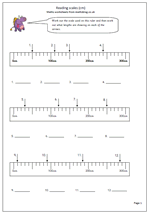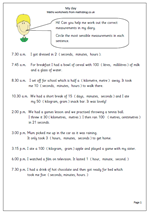We have a great set of worksheets for Counting and Number for year 3. There are pages which require grouping objects in to fives and tens to help with counting. There are also worksheets on counting back in tens, including crossing the hundreds boundary which can be tricky.
We have several worksheets which use number tracks to count as well as some revision exercises for those less confident with counting on and back. Slightly harder are the pages on finding half way between two numbers. A number line is always useful for this kind of work.








